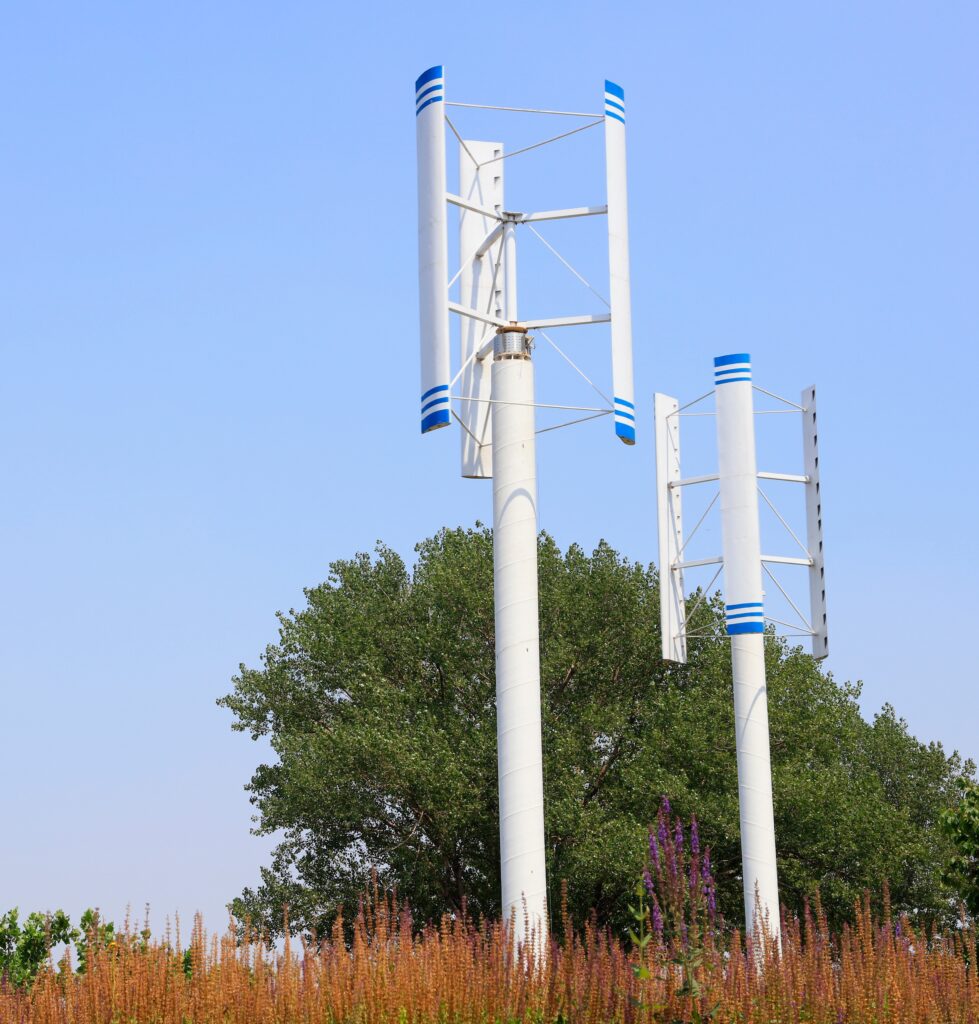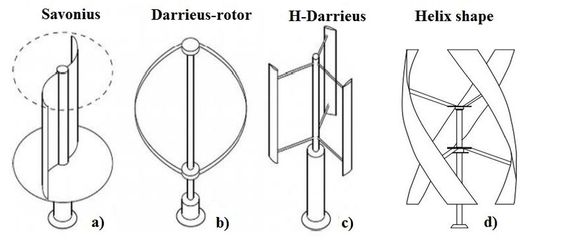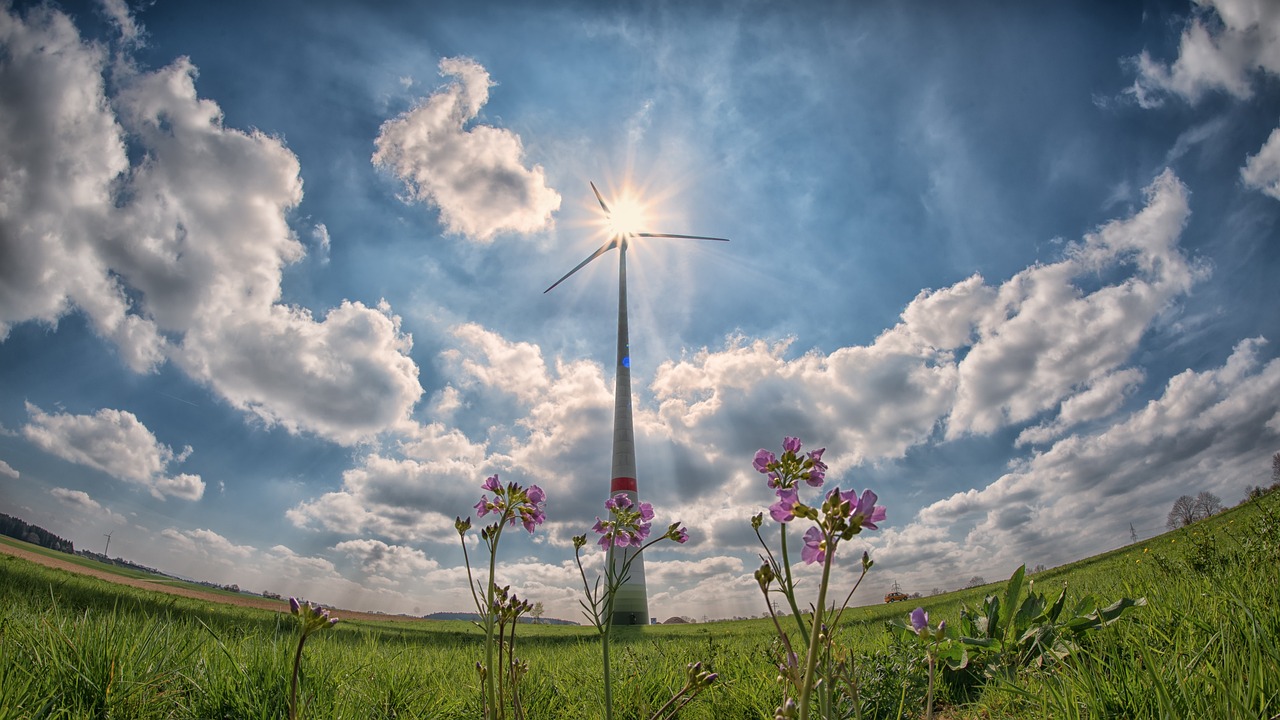Vertical Wind Turbine for Home
Moving to the countryside opens up a world of new experiences and opportunities, especially when it comes to embracing sustainable living. One of my most exciting adventures so far has been discovering vertical wind generators. These aren’t your typical wind turbines; they’re something quite special!
So, what are vertical wind generators? Imagine wind turbines, but with a twist – literally! These innovative devices capture wind from any direction and, unlike the traditional horizontal turbines we often see in open fields, they’re perfect for places with less space. They have a unique, vertical design that not only looks cool but also works wonders in lower wind conditions – something I’ve learned is super important.
I was fascinated by how these vertical turbines could fit so neatly into our rural landscape. They’re like modern windmills, blending seamlessly with nature while quietly working to produce energy. And the best part? They’re incredibly wildlife-friendly. No worries about our feathered friends getting too close!
Now, you might be thinking, “Why vertical wind generators?” Well, for starters, their compact size means they’re great for both urban and rural settings – a real game-changer for renewable energy options in diverse locations. Plus, they’re surprisingly efficient in areas where wind patterns are unpredictable, making them a practical choice for many of us living outside the bustling cities.
What sealed the deal for me was learning about the environmental benefits. These vertical wonders are champions of green energy, helping reduce our carbon footprint and protect our beautiful countryside. And, they’re a smart economic choice too. With the potential for lower installation and maintenance costs, they’re an investment that’s kind to both the planet and our pockets.

Understanding Vertical Wind Generators
The Basics of Vertical Wind Generators
When I first heard about vertical wind generators, I’ll admit, I was a bit puzzled. How do these things work? Well, it turns out, the concept is brilliantly simple and quite different from the traditional wind turbines we see dotting the hillsides. Vertical wind generators, or vertical axis wind turbines (VAWTs) as they’re technically known, have blades that rotate around a vertical axis. This is a stark contrast to the more common horizontal-axis wind turbines (HAWTs), which look like giant fans and need to face the wind to operate effectively.
The Advantages of Vertical Wind Generators
I’ve realized that vertical wind generators offer several advantages over traditional models, particularly for rural or residential use:
1. Direction-Independent: They can harness wind from any direction, which is great for areas where wind patterns are not consistent.
2. Space-Efficient: Their vertical and compact design makes them suitable for smaller spaces, even rooftops.
3. Lower Wind Speed Efficiency: They can operate effectively even in lower wind speeds, common in many residential areas.
4. Quieter Operation: This is a big one for me. They tend to produce less noise, which is less disruptive for both humans and wildlife.
5. Ease of Maintenance: With their main components located at the base, they are easier to access and maintain.
The Evolution of Vertical Wind Turbines
The concept of harnessing wind energy is not new. For centuries, windmills have been used for grinding grain or pumping water. However, the idea of using wind to generate electricity began to take shape in the early 20th century. The first recorded design of a vertical axis wind turbine dates back to the 1920s, developed by Georges Darrieus, a French engineer. His design, known as the Darrieus turbine, had curved blades that looked like an egg beater and was quite efficient for its time.
Fast forward to the present, and the design of vertical turbines has evolved significantly. From the original Darrieus model, we now have several designs like the Savonius, which is simpler and resembles two scoops facing opposite directions. This model is particularly popular due to its simplicity and reliability.
Another exciting development has been in the area of materials. Modern vertical turbines use lightweight and durable materials like carbon fiber or advanced composites. This makes them not only more efficient but also more resistant to harsh weather conditions, which is crucial in places with extreme climates.
The growth of vertical wind turbines has been fueled by continuous research and technological advancements. Universities and research institutions worldwide are constantly working on improving the design, efficiency, and cost-effectiveness of these turbines. Innovations in areas like aerodynamics, material science, and energy storage are playing a crucial role in making vertical wind turbines more appealing and practical for widespread use.
What’s really exciting is seeing how the popularity of vertical wind turbines is growing. They’re no longer just a niche product but are becoming a mainstream option for sustainable energy. Governments and private companies are investing in these technologies, recognizing their potential to contribute to a greener future.

See my other blog ‘Best wind turbine for home‘ for more information about specific vertical wind turbines.
Benefits of Vertical Wind Generators
One of the most compelling advantages of vertical wind generators is their minimal environmental impact. Unlike some other energy sources, they produce clean, renewable energy without emitting greenhouse gases or other pollutants. This is a big deal for someone like me who moved to the country to live a more eco-friendly life.
Wind turbines are not just powerhouses of clean energy; they’re also a goldmine for recycling. Gone are the days when old turbine blades ended up in landfills. Now, we’re turning them into cool things like car parts and everyday products. This shift is a huge plus for our planet, cutting down waste and championing sustainability in renewable energy.
Wildlife-Friendly Design
Another important aspect I appreciate a lot is how wildlife-friendly these turbines are. Their vertical design poses less risk to birds and bats, a common concern with traditional horizontal turbines.
Economic Benefits
Cost-effective: Vertical wind generators can be more cost-effective to install and maintain compared to traditional wind turbines. Their compact size and the fact that the generator and gearbox are located near the ground make maintenance easier and cheaper. For a small-scale setup like a residential property or a small farm, this is a huge advantage.
Independence: For those of us living in remote areas, energy independence is a big deal. Vertical wind generators can help reduce reliance on the grid. By generating our own electricity, we not only save on energy costs but also gain in the sense of self-sufficiency.
Efficiency in Various Settings
Vertical wind generators are not just for the countryside. Their ability to operate efficiently in lower wind speeds and in turbulent wind conditions makes them suitable for urban environments too. This versatility is a game-changer, offering a renewable energy solution for diverse settings.
Living in an area that doesn’t consistently experience high winds, I was initially skeptical about the feasibility of wind power. However, vertical turbines are designed to be effective even in low wind conditions, making them a practical option for many locations that aren’t suitable for traditional turbines.
Space-Saving and Aesthetically Pleasing
Their sleek, modern design can be a visual asset, especially compared to larger, more intrusive horizontal turbines. This aspect can be particularly appealing in community settings, where maintaining the visual appeal of the landscape is important.
Challenges and Limitations of Vertical Wind Generators
Living in a rural setting has taught me the value of not only embracing new technologies but also understanding their limitations. Vertical wind generators, despite their numerous benefits, face certain challenges that need to be considered.
Efficiency: One of the primary concerns with vertical wind generators is their efficiency compared to traditional horizontal-axis turbines. While they are efficient in low wind conditions, their overall power output can be lower. This is partly due to their design, which can lead to a portion of the rotor moving against the wind at any given time.
Durability: Another challenge is the durability of the materials used. The constant rotation and varying wind pressures can cause wear and tear on the blades and bearings. Ensuring that these turbines are built with robust, weather-resistant materials is crucial, especially in harsh rural environments.
Laws and perception: Navigating the zoning laws and public perception can be tricky. In some areas, installing a wind turbine, even a smaller vertical model, requires navigating a maze of regulations. Additionally, while they are generally quieter and less obtrusive, some people may still have reservations about having them in their community. The aesthetic aspect can also be a double-edged sword. While many find the design of vertical wind generators modern and appealing, others might view them as an eyesore. Gaining community acceptance is an important step towards wider adoption.
The Future of Vertical Wind Generators
One exciting trend is the integration of vertical wind generators with smart grid technology. Smart grids, with their ability to efficiently distribute and manage electricity, can be enhanced by the inclusion of vertical turbines, particularly in urban areas. This combination could lead to more resilient and adaptable energy systems.
Vertical wind generators are well-suited to a decentralized model of energy production, where power is generated closer to where it’s used. This reduces the reliance on large power plants and long-distance transmission lines, leading to more resilient local energy systems.
Vertical wind turbines can effectively complement other renewable energy sources, like solar power. For instance, on cloudy, windy days when solar panels are less effective, vertical wind generators can pick up the slack, ensuring a continuous supply of green energy.
As the world strives to reduce carbon emissions and combat climate change, vertical wind generators can play a crucial role. By providing a sustainable and clean energy source, they can help communities, cities, and countries achieve their carbon neutrality goals.
Future Scenarios
The future might see enhanced energy storage solutions paired with vertical wind generators. This would allow for energy to be stored when wind conditions are optimal and used when needed, increasing the effectiveness of wind as a reliable energy source.
For rural dwellers like myself, vertical wind generators could become a cornerstone of off-grid living, providing a sustainable and self-sufficient lifestyle. This is particularly appealing for those looking to reduce their environmental impact and live more harmoniously with nature.
Payback period for a wind turbine
The time it takes to recover the cost of a wind turbine depends on several factors such as the cost of the turbine, the cost of installation, the amount of energy produced, and the price of electricity. The payback period for a wind turbine is the time it takes for the savings generated by the turbine to equal the cost of the turbine. According to an NREL study based on data from 2021, the payback period for a wind turbine in the United States is typically between 5 and 10 years. According to a report by the European Union, the price of energy in the EU reached record levels in 2022, due to the increase in wholesale energy prices globally. This increase in energy prices logically leads to a shorter payback period.
Conclusion: Embracing the Winds of Change
Living in the countryside has deepened my appreciation for nature and the need to protect it. Vertical wind generators offer a way to do just that, providing us with a sustainable energy source that respects and preserves our environment. For those of us seeking to reduce our carbon footprint, embrace sustainable living, or simply explore the wonders of renewable energy, vertical wind generators offer a path forward.
Ongoing research and development are crucial. With continuous investment in R&D, we can expect to see vertical wind generators that are not only more efficient and durable but also more acceptable to communities and policymakers.
As awareness and acceptance grow, we’re likely to see an increase in the adoption of vertical wind generators in urban and residential areas. Their small footprint and lower noise output make them ideal for these environments, providing a clean energy source that’s close to where it’s needed.
When you try to live sustainably vertical wind generators are definitely a technology to watch. Whether you’re a fellow country dweller, an urbanite, or just someone curious about renewable energy, I hope to spark your interest in these amazing devices. They’re not just about generating power; they’re about powering a brighter, greener future for all of us.
Please share this blog with your friends and spread the eco-love. I’d also love to hear from you – drop a comment below and share your experiences with wind energy.


Leave a Reply